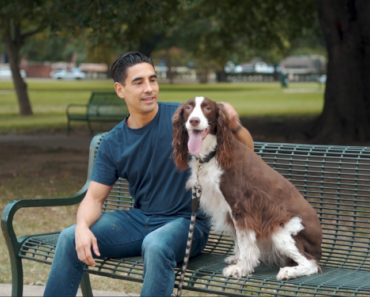How well do you understand your dog’s mind? Ongoing research reveals that the cognitive and emotional lives of canines are much richer and more complex than we think.
We live in an age of discovery when it comes to the inner lives of our dogs. A multitude of recent studies have offered intriguing insights into canine cognition and emotions. We are learning that dogs have a unique bond with us and are mentally capable of much more than we previously thought. Although the jury is still out on the canine ability to experience complex human emotions such as guilt, shame and jealousy, we do know that dogs can read our body language and respond extremely well to it. They can also recognize our faces and decipher our emotions. They look to us for information and use it to build a relationship with us and maintain their safety. In this article, we’ll look at some of the studies that are expanding our understanding of what goes on inside the canine mind.
Canines have a form of social competence
Dogs live and work in close association with humans (see sidebar at left), and through this relationship have developed exceptional social communication skills, a form of social competence.
Social competence is the ability to get along with people; know what is expected for social interactions, such as making eye contact; “reading” people’s facial expressions and gestures; recognizing emotions; and communicating effectively. In fact, researchers from dog cognition labs, including the Max Planck Institute and the Duke Canine Cognition Center, have found that dogs routinely outperform chimpanzees in tests of social cognitive ability, such as following a person’s finger point or head nod to find hidden food.
Are you paying attention?
A number of studies have shown that dogs use their minds to comprehend when we are paying attention to them and can capitalize on that information. In a study by Brian Call from the Duke Canine Cognition Center, dogs were forbidden to take a piece of food, after which the experimenter either kept her eyes open and on the food, closed her eyes, feigned distraction by a computer game or turned her back. The dogs ate less food when the person was paying attention to them, compared to all other situations.
Marta Gácsi and colleagues at the Clever Dog Lab found that dogs will obey commands faster when the person giving the command is facing them and in sight. They also learned that dogs can tell the difference between intentional communications, such as pointing to food versus accidental pointing (when checking a wristwatch, for example).
In another study on attention in dogs, Juliane Bräuer at the Max Planck Institute found that dogs know what people can see, and use that information to make choices. In tests in which dogs were challenged with forbidden food, they took it more often when the human could clearly see the food, as opposed to when the person’s view was obstructed by a large barrier. These findings provide evidence that dogs know when we are paying attention to them, and use this information to guide their behavior.
What do dogs know about our emotions?
We have learned that dogs have strong attachments and pay attention to us, but what do they know about our emotions? Studies show they can recognize our faces. Ludwig Huber and his colleagues at the Clever Dog Lab found that dogs discriminate between images of their humans and unfamiliar people. Studies by Laura Cuaya and her colleagues, using functional magnetic resonance imaging (fMRI), show that dogs use areas in their brains similar to the ones we use for processing human faces and voices. Dogs determine the meanings of our facial expressions using information from multiple facial features (not just the eyes). Researchers Sanni Somppi and colleagues at the University of Helsinki found that dogs respond rapidly and with avoidance behavior to threatening facial expressions in people. Dogs appeared to deem angry human faces as threatening to their safety, and acted to dispel this threat.
 Dogs also can decode the emotion in our voices. In other fMRI studies, Atilla Andics with the Comparative Ethology Research Group found that the brain regions dogs use for processing human voices respond more strongly to positive vocalizations. To further understand what dogs know about our emotional states, Natalia Albuquerque and her colleagues presented dogs with photos of human faces that were either happy or angry, and paired each image with a vocalization that was either positive or negative. Dogs looked longer when the emotion on the face matched the emotion in the vocalization. These findings show that dogs can understand the validity of emotional information and can process these cues in their minds similarly to how we do.
Dogs also can decode the emotion in our voices. In other fMRI studies, Atilla Andics with the Comparative Ethology Research Group found that the brain regions dogs use for processing human voices respond more strongly to positive vocalizations. To further understand what dogs know about our emotional states, Natalia Albuquerque and her colleagues presented dogs with photos of human faces that were either happy or angry, and paired each image with a vocalization that was either positive or negative. Dogs looked longer when the emotion on the face matched the emotion in the vocalization. These findings show that dogs can understand the validity of emotional information and can process these cues in their minds similarly to how we do.
Dogs use social referencing
Dogs also use information around how a person feels about a situation to determine how to react, a phenomenon called social referencing. Isabella Merola and her colleagues found that when dogs received positive messages from a person approaching an unfamiliar object, they also approached the object. This wasn’t the case when the person gave a negative emotional message about the object. Dogs responded even more strongly when their owners were giving the messages. This shows that dogs take in emotional information from us and use it to determine how they will respond to a situation.
Canine minds — what does the future hold?
More studies may further deepen our perceptions of the canine mind; for example, we may find their emotional lives might be just as rich as our own. For the time being, just understand that your dog is deeply bonded to you and looks to you for information and guidance on how to navigate his world.



























